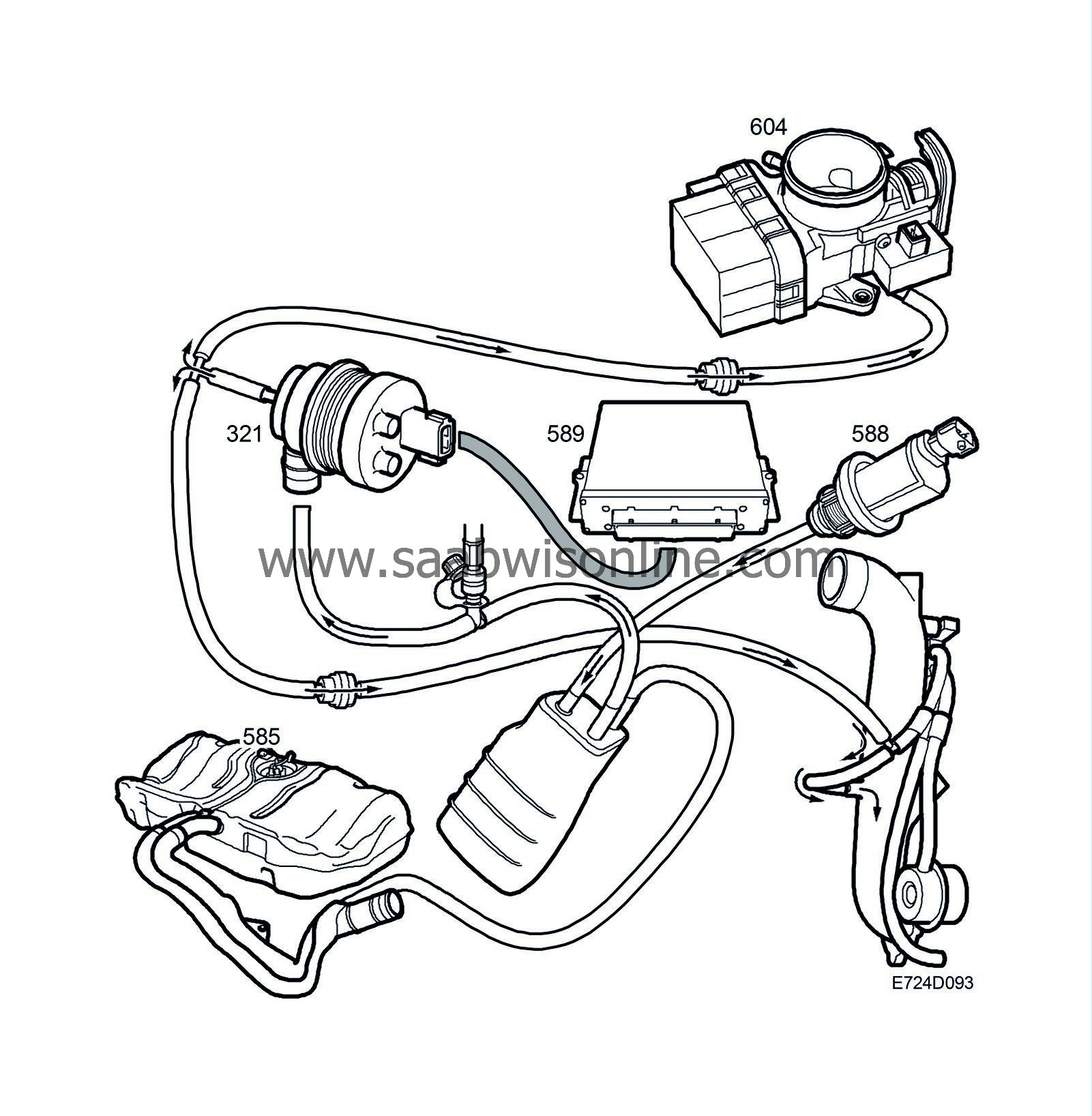Purging
| Purging |
When not supplied with current, the purge valve is closed. It is supplied with current from the main relay and controlled with an 8 Hz PWM signal from control module pin 27.
The flow is controlled by the pulse ratio so that it always constitutes a specific proportion of the total flow consumed by the engine.
If the flow has a fuel/air ratio other than 14.7:1, the closed loop control system will be affected. However, since it is not the closed loop system's function to correct for the additional purge air, the purging function has a correction factor which is affected by the closed loop system as soon as purging starts. The closed loop system's entire deviation from 1.00 is added to the purge correction factor, which means that the closed loop system fluctuates round 1.00 (0%) even if the purge air contains large quantities of hydrocarbons or consists of clean air.
When purging is not active, the factor 1.00 is used and the entire fuel fault is corrected by the closed loop system and the multiplicative and additive adaptations.
The limits for purging adaptation are 0.75 and 1.25.
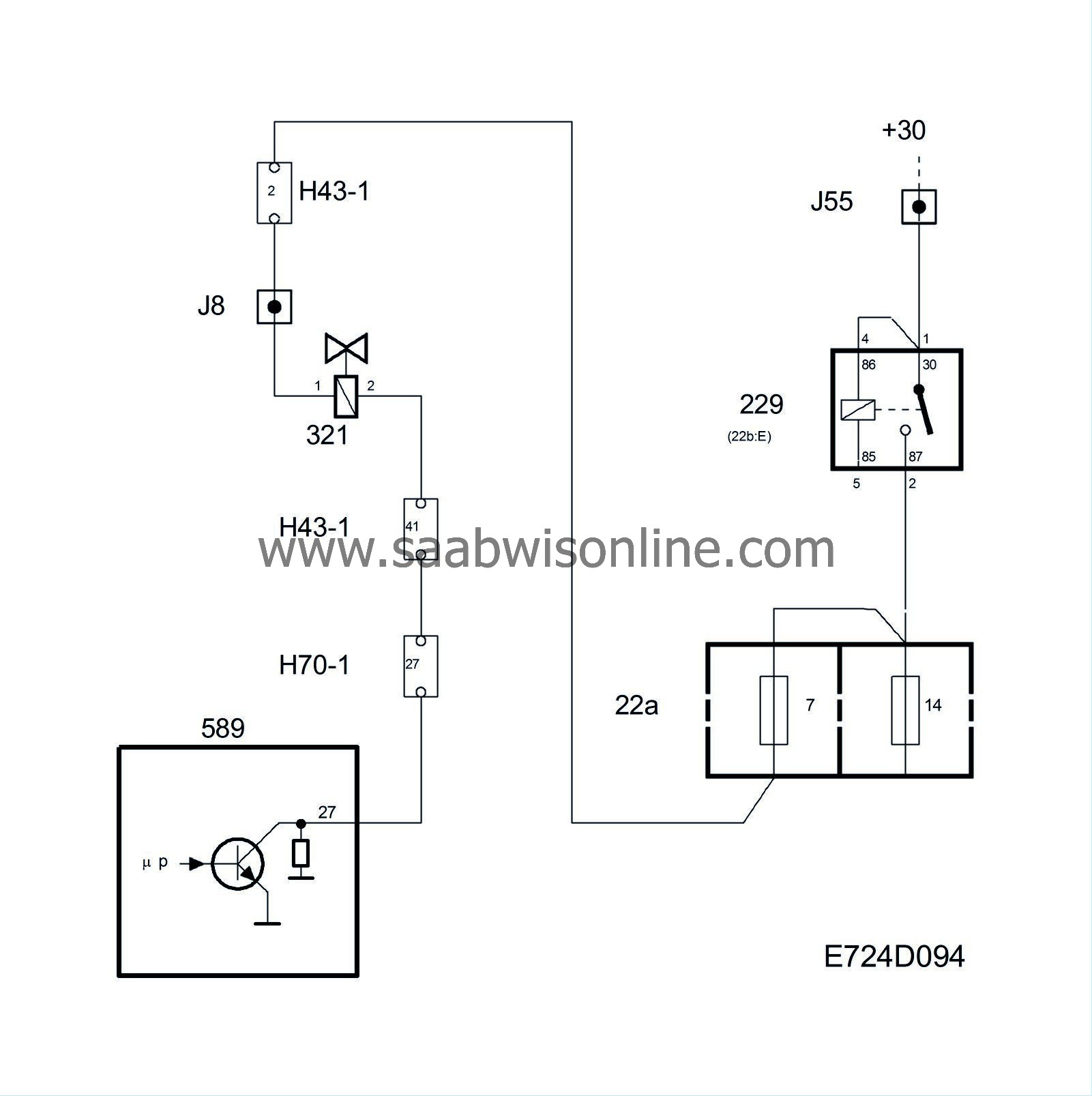
The following conditions must be fulfilled for purging to be engaged:

| • |
Closed loop must be active.
|
|
| • |
No fuel adaptation in progress; this takes place for 30 seconds every 5 minutes.
|
|
| • |
The coolant temperature must exceed 50 °C.
|
|
| • |
If the coolant temperature is below 5 °C when the engine is started, the vehicle speed must exceed 10 km/h.
The function is active during the entire driving cycle and reduces the risk of noise from the valve. There is more noise from the valve when it is cold. |
|
The diagnostic tool shows 25% when the correction factor is 1.25 and -25% when the correction factor is 0.75.
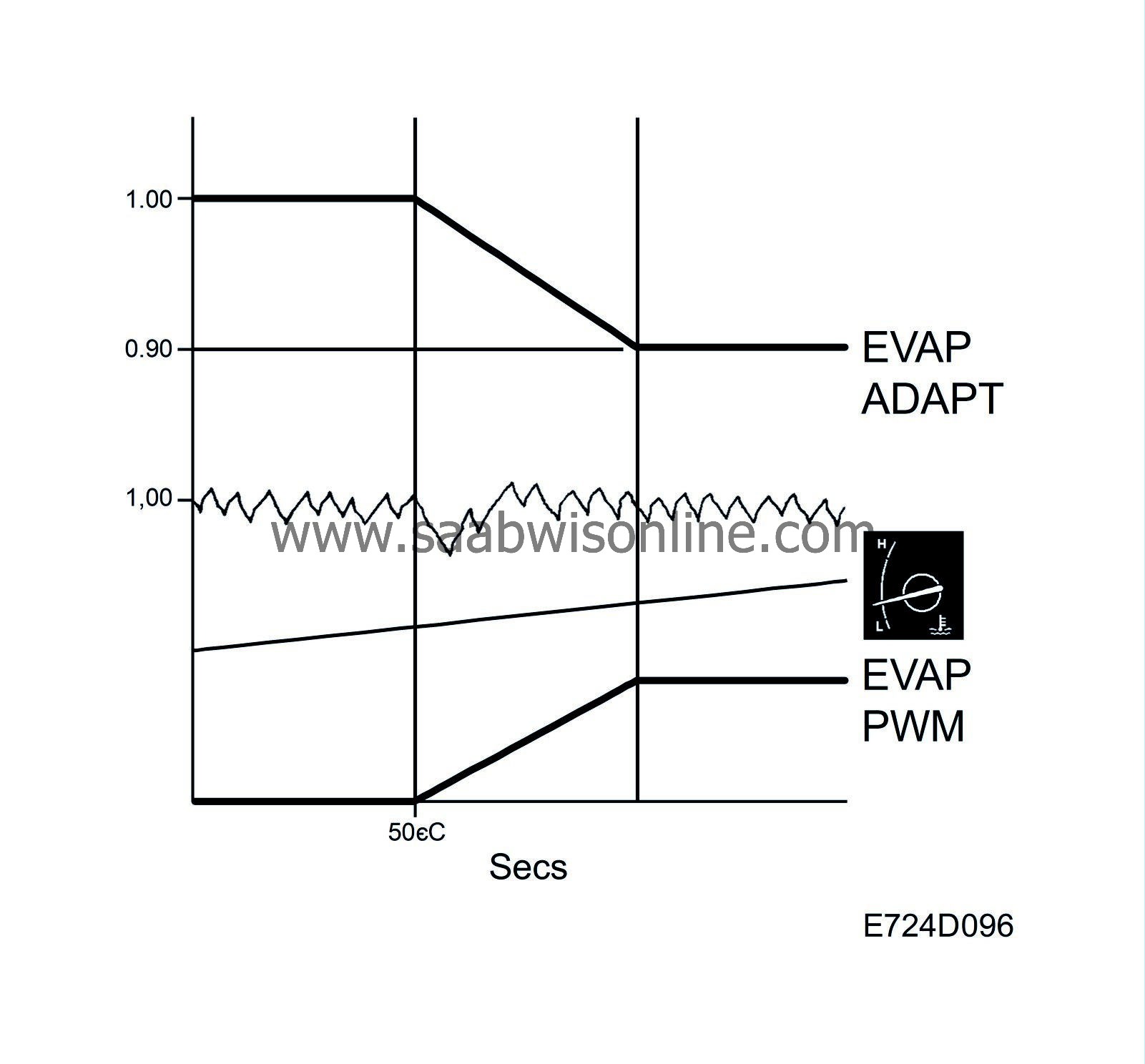
| Diagnostics |
| • |
If a break or short-circuit to ground occurs, diagnostic trouble code P0444 will be generated.
|
|
| • |
If there is a short-circuit to B+, diagnostic trouble code P0445 will be generated.
|
|
| • |
An internal leak in the valve will generate diagnostic trouble code P0441.
|
|||||||
| Integrity diagnosis |
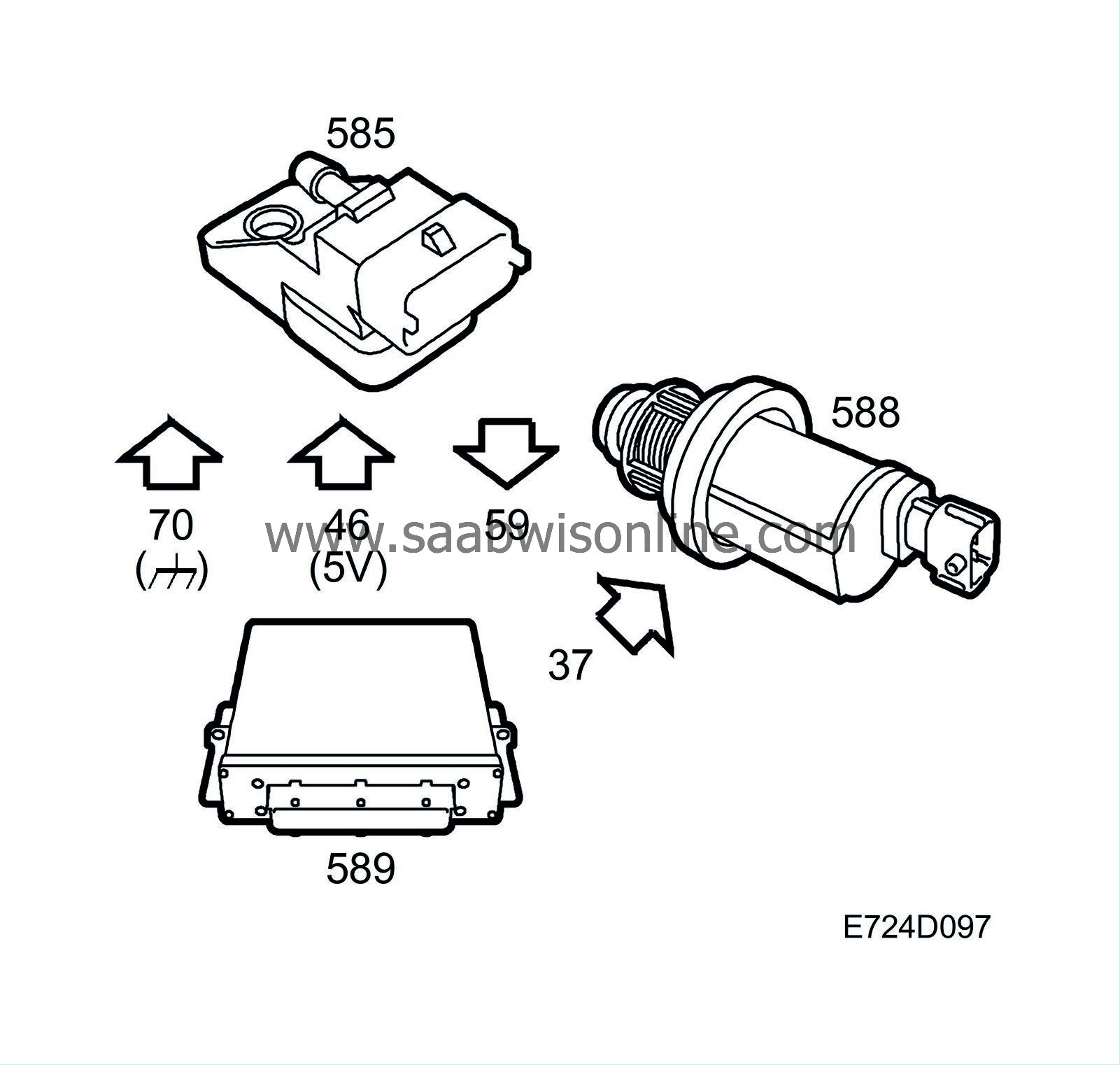
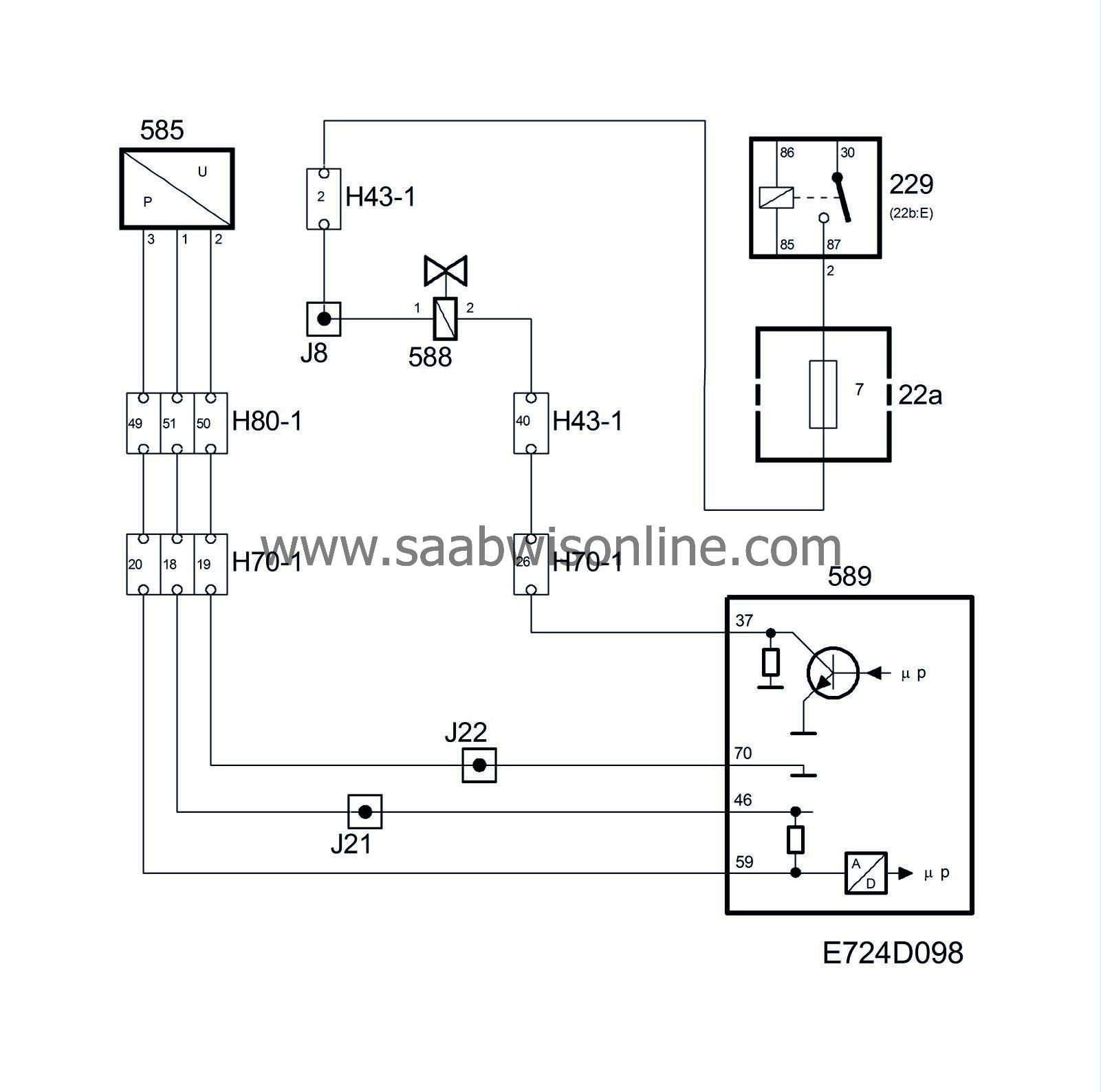
On-board diagnostics must be able to detect a leak in the purge system that is the equivalent of a hole with diameter 1mm.
For this reason, there is a differential pressure sensor fitted on the tank and a shut-off valve on the EVAP canister atmospheric connection. When the shut-off valve is closed, it must be possible to create and maintain negative pressure in the tank with the purge valve. If this cannot be achieved, there is a leak in the system and a diagnostic trouble code will be generated. The diagnosis is performed once per driving cycle.
The pressure sensor is supplied with 5V from control module pin 46 and grounded from control module pin 70. The pressure sensor applies a proportional voltage on control module pin 59 depending on the difference in pressure between the tank and the atmosphere. The pressure sensor value is adapted to 0 kPa when the ignition is turned on, providing the coolant temperature is below 40 °C and the fuel level is below 50 litres.
The shut-off valve is open when de-energized. It is supplied with power from the main relay and governed from control module pin 37.
| Diagnostics |
Pressure sensor
| • |
If the sensor voltage is too low, diagnostic trouble code P0452 will be generated.
|
|
| • |
If the sensor voltage is too high, diagnostic trouble code P0453 will be generated.
|
|
| • |
If the pressure is implausible, diagnostic trouble codes P1451-P1453 will be generated.
|
|
System reaction to a fault
| • |
Integrity diagnosis is blocked.
|
|
| • |
Fuel adaptation and purging are blocked on P1452.
|
|
Shut-off valve
| • |
Diagnostic trouble code P1444 will be generated in the event of a break or short-circuit to ground.
|
|
| • |
Diagnostic trouble code P1445 will be generated in the event of a short-circuit to B+.
|
|
System reaction to a fault
| • |
Fuel adaptation and purging are blocked.
|
|
Integrity
| • |
A minor leak will generate diagnostic trouble code P0442.
|
|
| • |
A major leak will generate diagnostic trouble code P0455.
|
|

